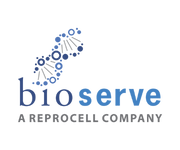Clinical Diagnostics
PreciONC - ONCOLOGY
One of the world’s leading causes of death is cancer and one million new cancer cases are identified, and millions of people die every year from this deadly disease. The small silver lining of the whole sad problem is that if cancer is diagnosed in time, millions of individuals will be saved.
The New Era – Instead of treating tumors with the same blanket chemotherapies, there are more intelligent approaches that allows the features of the tumors to precisely match the drugs that will target the tumors selectively this is the basis of Precision Oncology.
Critical requirement is that Tumors be assessed for the presence of mutations, genetic aberrations or transcriptome analysis.
Precision Oncology – Treatment Tailored to Individual Characteristics of each patient’s disease. More efficient, Less Toxic.
BioServe Biotechnologies continuous efforts to provide clinicians with an integrated molecular diagnostic solution for Oncology allows hereditary risk assessment, differential diagnosis, reliable prognosis, selection of targeted treatment, monitoring of therapy, and surveillance of disease.
Genetic testing helps predict your risk of developing cancer. By looking for subtle changes in the genes, chromosomes, or proteins, genetic testing helps to find out the variations and these variations are called as “Mutations”.
